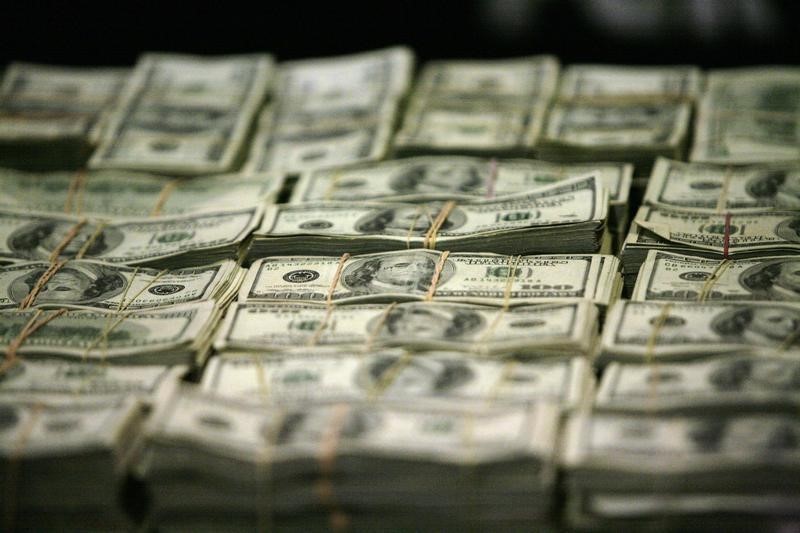Investing.com - The dollar erased gains against a basket of other major currencies on Tuesday, after data showed that the U.S. trade deficit widened to the highest level since 1996 in March, while investors eyed the release of additional U.S. economic reports later in the day.
The U.S. Bureau of Economic Analysis reported that the U.S. trade deficit widened to $51.37 billion in March from a deficit of $35.89 billion in February, whose figure was revised from a previously reported deficit of $35.4 billion.
Analysts had expected the U.S. trade deficit to widen to $41.2 billion in March.
The dollar had strengthened earlier, as recent economic reports indicated that the U.S. recovery had turned a corner after a recent bout of weakness.
The U.S. dollar index, which measures the greenback’s strength against a trade-weighted basket of six major currencies, was down 0.12% to 95.46 after rising to 95.58 earlier in the session.
EUR/USD edged up 0.09% to 1.1151, easing off session lows of 1.1066.
The single currency found support after the European Commission said in its quarterly forecasts that it now expects the euro zone economy to grow to 1.5% in 2015 up from 1.3% three months ago.
The Commission also revised up its forecast for inflation this year to 0.1% from its earlier forecast for a decline of 0.1% and said it expects inflation of 1.5% in 2015 up from 1.3%.
Investors still remained cautious amid eports the International Monetary Fund pushed the euro zone to cut Greece’s debt burden last month, amid fears that its debt is becoming unsustainable.
Athens is scrambling to reach an agreement with its creditors on a package of economic reforms for more bailout funds before it runs out of cash.
The pound was higher, with GBP/USD up 0.30% to 1.5161.
Sterling showed little reaction to a report by market research firm Markit and the Chartered Institute of Purchasing & Supply showing that their U.K. construction purchasing managers' index declined to an almost 22-month low of 54.2 last month from a reading of 57.8 in March.
Economists had expected the index to tick down to 57.5 in April.
Elsewhere, the dollar was higher against the yen, with USD/JPY edging up 0.14% to 102.30 but turned lower against the Swiss franc, with USD/CHF sliding 0.30% to 0.9309.
The Australian dollar remained stronger, with AUD/USD up 0.76% to 0.7894 after the Reserve Bank of Australia lowered its benchmark interest rate by 0.25% from 2.25% to a record-low 2.00%, in a widely expected move.
Meanwhile, NZD/USD shed 0.28% to 0.7516 and USD/CAD slipped 0.16% to trade at 1.2073.
In Canada, data showed that the trade deficit widened to C$3.02 billion in March from C$2.22 billion in February, whose figure was revised from a previously estimated deficit of C$0.98 billion. Analysts had expected the trade deficit to narrow to C$0.85 billion in March.
Later in the day, the U.S. was to release data on construction sector activity, while the Institute of Supply Management was to release a report on U.S. service sector activity.
